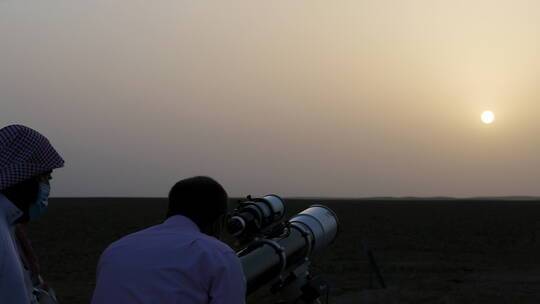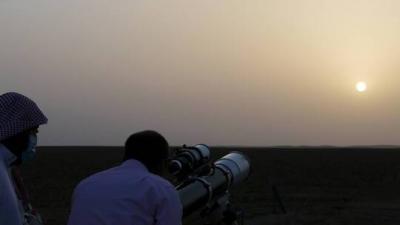The Saudi Astronomical Society in Jeddah has revealed that the sky of the Kingdom and the Arab world will witness an alignment of five planets from December 28 to January 3, 2022. The head of the Astronomical Society in Jeddah, Engineer Majid Abu Zahra, noted that "the planets Venus and Jupiter are brighter than the brightest stars, making them easily visible to the naked eye. Saturn and Mercury are also within the range of naked-eye visibility, but Neptune and Uranus require the use of binoculars or telescopes." He pointed out that "the observation starts on the evening of Tuesday, December 28, when the planets Venus and Mercury will be at their closest point in the sky. Observers need to be in an open location free of obstructions towards the southwestern horizon, and the two will be near each other about 40 minutes after sunset."
Majid Abu Zahra added: "Mercury has risen away from the setting sun to pass close to Venus, with a separation of 4 degrees. On December 31, it will have risen to the upper left of Venus at a distance of 7 degrees. Throughout the week, the brightness of Mercury will be (-0.7)." He explained that "when observing Venus (-4.3) through a telescope, it will appear as a thin crescent, becoming thinner each day, and it is preferable to observe it before nightfall."
This week, it will be noted that the crescent of Venus grows from 55 to 60 arc seconds, while its illumination decreases from 8% to only 2%. Afterwards, Jupiter (-2.1) will be seen to the upper left of Venus, which now has an angular size of only 36 arc seconds. In the midpoint between it and Venus, the faint Saturn (+0.7) will be seen, which will be bright enough to show in the evening twilight.
The head of the Astronomical Society explained that "to observe the faint planets Neptune (+7.9) and Uranus (+5.7), one will need to wait for complete darkness and use an application to locate them. Uranus will be very high in the southeastern horizon early in the evening, while Neptune will be lower in the south and southwest after dark."




